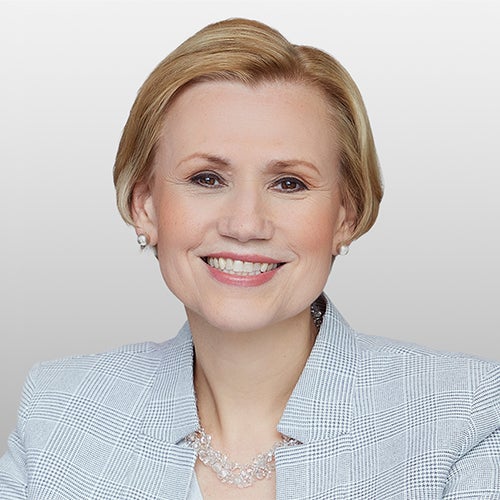Last week brought a number of key developments from central banks around the world, from the release of the Federal Reserve’s (Fed) latest meeting minutes, to a reaffirmation of the Bank of Canada’s (BOC) monetary policy, to the first speech from European Central Bank (ECB) President Christine Lagarde. These underscored the key differences between each central bank, but I see one constant: the continued pressure imposed by trade war tensions and a slowing global growth outlook.
Despite trade war pressures, BOC expected to maintain current rates
In a speech last week, BOC Governor Stephen Poloz admitted that global trade conflicts have inflicted some damage on the Canadian economy, hurting both exports and investment, but he asserted that he is confident that the economy is in solid condition. It seems clear that this assessment is the basis for his belief that current monetary conditions seem appropriate, which he underscored in his speech. This helped to confirm expectations that the BOC will maintain the status quo for its key discount rate at its December meeting. Of course, Mr. Poloz did acknowledge that the BOC is concerned that trade-related weakness could spread from exports and investment into other areas of the economy, including the housing and service sectors, but he stressed that the BOC is monitoring the situation closely. The BOC has been unusual in that it has not provided any easing in 2019, despite the fact that its southern central bank neighbor, the Federal Reserve (Fed), cut rates three times in 2019.
Fed in a likely holding pattern with rates
Turning to the Fed, last week saw the release of the minutes from the most recent Federal Open Market Committee (FOMC) meeting. They show a Fed that continues to reiterate the same rationale for the rate cut in October that it had for previous rates cuts in 2019: “persistent weakness in global growth and elevated uncertainty regarding trade developments.” The minutes also confirmed that the Fed is on hold for now. “Most” participants viewed current monetary conditions as being “well-calibrated” to support the Fed’s policy goals, and feel they are likely to remain so. It would take a “material reassessment” of the outlook for policy to change. I believe this was important because it re-confirms that there is a high bar for the Fed to raise rates, suggesting that conditions will remain accommodative for some time to come.
The FOMC minutes also included a lengthy discussion about the policy tools that the Fed could use to combat the next recession. This was a necessary conversation — but the conclusions were entirely predictable. It is clear that the Fed believes a zero interest rate-policy (ZIRP) remains a possible tool in its toolkit. However, the Fed does not believe a negative interest-rate policy (NIRP) is a viable option; per the minutes, “all participants judged that negative rates currently did not appear to be an attractive monetary policy tool in the United States.” The minutes gave the strong impression that the Fed will stick to the post-global financial crisis (GFC) tool kit — the trifecta of lowering discount rates (to zero if necessary), forward guidance and quantitative easing — even though many members recognized that the power of these instruments is likely diminishing.
Also last week, US President Donald Trump met with Fed Chair Jay Powell on a variety of topics related to the economy and monetary policy, including interest rates, low inflation, monetary easing, dollar strength and trade tensions. The Fed issued a statement after the meeting, where Powell emphasized that the path of future monetary policy “will depend entirely on incoming information that bears on the outlook for the economy,” and that rate-setting decisions are “based solely on careful, objective and nonpolitical analysis.” In other words, the Fed remains a politically independent but data-dependent central bank.
Amid global slowdown, ECB again calls for fiscal stimulus
Also last week, Lagarde made her first speech as the new ECB president. Lagarde called for a new policy mix in Europe, one that relies more on fiscal stimulus. This is similar to requests we have heard from other central bankers including former ECB president Mario Draghi and Jay Powell; in recent years, all have implored governments to increase fiscal stimulus, but for the most part, their pleas have fallen on deaf ears. Lagarde suggested that the situation is now more dire, given the current trend toward deglobalization: “Ongoing trade tensions and geopolitical uncertainties are contributing to a slowdown in world trade growth, which has more than halved since last year. This has in turn depressed global growth to its lowest level since the great financial crisis.”
I believe Lagarde is truly between a rock and a hard place. She is desperately in need of more fiscal stimulus but remains at the mercy of governments; all she can do is continuously request they increase fiscal stimulus. She also has the problem of a divided ECB, with a significant faction apparently opposed to more monetary policy stimulus. However, I still hold out hope that she is the central banker most likely to explore new monetary policy tools, which could be more effective than the GFC toolkit.
People’s Bank of China defends against trade conflict headwinds with rate cut
Finally, last week saw a small 5 basis-point cut in loan prime rates (LPRs) to 4.15% for one-year loans and 4.80% for five-year loans in China.1 This is important because it confirms that banks are lowering lending rates in response to recent cuts in lending facilities by the People’s Bank of China (POBC). In other words, banks are passing on rate cuts to borrowers, which should ease stress on corporate balance sheets and support credit growth. I expect this to provide a boost to the housing sector, since mortgage rates have moved slightly lower. It is also a reminder that the PBOC continues to slowly ease and stands ready to do whatever is needed to continue to support the Chinese economy in the face of headwinds created by the ongoing trade conflict (while ensuring it doesn’t need to make major concessions in its trade negotiations with the US).
Central bank developments come amid disappointing global outlooks
These central bank developments come at a time when the global economy is coming under pressure, as Lagarde pointed out. Just last week, the Organization for Economic Cooperation and Development (OECD) said in its quarterly report on the global economic outlook that global growth remains at the slowest pace since the financial crisis, and it doesn’t expect any improvement next year. The OECD lowered its forecast for global economic growth in 2020 to 2.9% from its September forecast of 3%. Laurence Boone, the OECD’s chief economist, explained, “What we are seeing is investment stalling, paving the way for growth to stay at this very low level.”
Moreover, a separate report from the World Trade Organization last week indicated concern that members of the G20 leading economies continued to impose restrictions on trading in the six months through October, with new measures affecting $460.4 billion of goods (the second-highest figure for a six-month period on record).
And so, as we look ahead, it’s clear that many market participants are worried about the slowdown in global growth. Many are also dismayed about the lack of progress in the US-China trade talks, as it does not look like a phase-one deal can be reached in 2019 (although hope was reignited earlier today by news that China is reportedly tightening intellectual property protections).
We have anticipated both these developments and so we are not rattled by them — although we recognize that economic policy uncertainty could be exacerbated if the trade war were to get worse (especially if the US chooses to impose additional tariffs in December). As a result, companies might not just curtail business investment, but that uncertainty could spill over into the postponement of some hiring. That could have a negative impact on currently financially solid but vulnerable consumers such as those in the US — which has a large cohort of consumers with little or no savings who rely on a strong employment environment to remain financially healthy. But that is a “worst case” scenario.
The far more likely scenario is that if economic data deteriorates, central banks become more accommodative. Although their tools may be becoming less effective, I believe they will still be impactful — especially for the stock market. And there is the potential for upside if central banks begin to implement new, more effective tools or if/when certain governments (China, India and possibly the US) increase fiscal stimulus.
Looking ahead to this weekend’s retail spending
Looking ahead, I will be focused on retail spending for Black Friday and Cyber Monday — an important economic bellwether given how critical the consumer is to the overall US economy. We saw the strength of the Chinese consumer on display with the results of Singles Day. While I don’t expect the results to be as robust, I still expect consumers in the US to put in an impressive performance on Black Friday and Cyber Monday given the strong labor market and very positive consumer sentiment. However, these spending events are not just about the US; a number of other countries have implemented these sales events, which should provide some insight into not just the health of the consumer but consumer sentiment in countries such as Canada, the UK, Japan, Mexico, India and China. Stay tuned.








